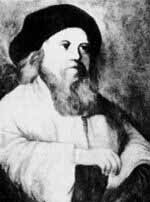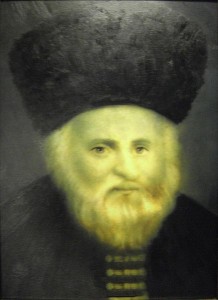
Earlier this week, I discussed my surprise in learning that my mother’s family home, the town of Tarnow, was defined as a shtetl on a Jewish genealogy site. I hadn’t previously traced my ancestry beyond sophisticated Vienna, and the notion that my origins were Yiddish-speaking and roof-fiddling took some mental adjustment.
I next decided to try to put Tarnow into a larger European Jewish context. More surprises. Tarnow, I learned, was in Galicia, a province that was part of a long-standing internecine conflict I’d only vaguely been aware of: The Galitzianers vs the Litvaks.
A Little Geography/History Lesson

I have spent the last few days poring over maps, trying to find one that would make it clear where the Lithuanian Jews (aka Litvaks) lived in relation to the Galician Jews (aka Galitzianers) — with little success. The borders of today’s Lithuania don’t represent those of 18th-century Lithuania, the period during which the conflict arose. But at least I can show you where Tarnow and Galicia are in relation to the rest of the Austro-Hungarian empire (1867-1918), including to its capital, Vienna.
And I can tell you that the Litvaks and Galitzianers were neighbors. The former lived to the northwest of Galicia in present-day northern Poland, Lithuania, Belarus, and Ukraine. Indeed, if I am interpreting this Wikipedia entry correctly — I found it hard to get past the sentence “after Boleslaw-Yuri II was poisoned by local nobles in 1340, both the Grand Duchy of Lithuania and Kingdom of Poland advanced claims over the principality” — Galicia and Lithuana had once comprised the Principality of Galicia–Volhynia.
So, although it was part of the Austro-Hungarian Empire, Galicia was far closer, ethnically and historically, to Poland and Lithuania than to Austria. The Galician and Lithuanian Jews were also closer to each other linguistically than they were to the other Jews of the Austro-Hungarian empire. I mentioned in my last post that there was a hierarchy of Germanic languages among European Jews, with the German spoken in Germany at the top of the ladder, Viennese German — as opposed to rural Austrian German — a rung below, and Yiddish at the bottom. Both Litvaks and Galitzianers primarily spoke Yiddish, albeit with different accents and colloquialisms.
Definitely a family feud.
The Very Religious Vs. the Differently Very Religious

As so often happens, the differences that caused the rancor between these two otherwise closely related groups of Jews were religious ones, an 18th-century schism between the followers of the Vilna Gaon (pictured to the left) and the Ba’al Shem Tov (pictured in the heading of the post, 1698-1760). The Jewish Virtual library discusses the theological rift.
In brief, the Litvaks founded institutions of higher education known as yeshivas, where they had rigorous debates over the meaning of religious texts. Their style of prayer was restrained. The Galitzianers came under the influence of a mystical, charismatic form of Judaism called Hasidism. The Hasidim dubbed their less emotionally oriented brethren Mitnagdim (opponents).
Doctrinal differences aside, the Hasidim considered the Mitnagdim persnickity cold fish, while the Litvaks thought the Hasidim were meshuggenah holy-rollers.
This seems to me akin to the difference between talking-in-tongues Pentecostals and the more traditionally church-going fundamentalist Protestants. But what do I know? I grew up in a predominantly Jewish and Italian neighborhood. Until I was about 12, I had never met a Christian who was not Catholic.
Galitzianers Who Behaved Like Litvaks
In theory, then, my mother’s family, the Kornmehls from Galicia, should have been Hasidic. But they weren’t, not even the very religious ones.
I’ve already introduced Rabbi Nuchim Zvi Kornmehl, who blessed Barton’s chocolate — in addition to his other rabbinical duties in the U.S., where the Nazis forced him and his family to move in 1938. He was born in Ryglice, Poland, in the province of Tarnow, where his father, Mordechai Motel Kornmehl, was also a rabbi. Rabbi Mordechai Kornmehl’s family moved to Vienna in 1914. Nuchim, who was somewhat of a prodigy, attended yeshiva — a Mitnagdim institution. He must have grown up speaking Yiddish; according to a family biography, “He taught himself German and read the works of Kant, Freud, Goethe, and Schiller.” This was also a Mitnagdimish thing to do.
What does it mean, then, that the family roots were Galitizianer but that the Kornmehl rabbis were Litvak-style Mitnagdim? Or that I grew up near Crown Heights in Brooklyn, the heart of a Hasidic sect called the Lubavitchers, but never personally knew a Hasidic Jew?
I can only speculate on the fluidity of borders — Tarnow was close to Litvak territory — and the dangers of stereotyping. As the disciples of a Viennese doctor with Galician roots might say, What do you think?
I am far better qualified to discuss the Litvak/Galitzianer culinary divide — coming up next.

Well done, Edie.
No Hasids in our family on the paternal Kornmehl side.
My mother in law,Frances was also born in Tarnov. But she came from a Hasidic family and spoke Yiddish.
Nathan and Frances Kornmehl were intermarried religiously – a Litvak and Galitzianer. And it was a wonderful marriage!
How interesting that Frances came from a Hasidic family! I can’t wait for your comments on my next post — about the food they ate. Now there, in my book, would be cause for contention!
Again truly fascinating. Geography of the soul! Linguistic maps also diffuse differently – and what sense could be made of why these religious distinctions (gist unctions spellcheck wrote) developed as they did post-diaspora – so which comes first – earthy religion and rural Yiddish and later high German and secularism? So many questions – so fun to learn about in this way – this. Blog has legs by jiminy!
It’s been a fascinating journey — it’s taken me days to write this one post, and there’s still so much I don’t know, including, as you say, why these religious distinctions developed as they did.I’m glad you enjoyed it.
Fascinating post–so complex. And I love that picture of the Vilna Gaon! I second your remark about the dangers of stereotyping–and also of making generalities. There are always more particular differences and variations (and contradictions) than we think. The breakup of the Austro-Hungarian Empire after WWI, by the way, seems to have been a contributing factor to the developments that led to the rise of Hitler and all that followed: starting with the loss of the enormous self-esteem that had been associated with belonging to that Empire.
I’m learning so much from these small family history projects (which always seem to balloon and, as I wrote to Diane, take me days). I’ve never really enjoyed traditional history books — but I suppose no one does unless they have fully fleshed characters in them, whether real or fictional. So I’m enjoying Frank Tallis’ mysteries, set in early 20th century Vienna, which touch on topics like the early roots of anti-semitism along with — one of his primary topics — psychology.
Looking forward to reading about the culinary divide. Also found your description, “fluidity of borders” interesting, as I often think and write about fluidity of identity, which can be related. This fluidity also can lead, not only to conflict, but also to unity in diversity, my hope for the world.
My hope for the world, too, Anna, and a nice message for you to come away with from this post — and for you to share. That’s the great thing about the blogging format — I often learn as much about what I’ve written as I do when I’m writing it.
Everyone else beat me to the punch, as I wanted to say FASCINATING.
So, where lay Freud’s heritage in all this?
Thanks, Clare.
Well, Freud was only 5 when his family moved to Vienna from Moravia, which was not as bad, I gather, as Galicia, where his father was from. Still, his background was considered inferior by his snobby in-laws. And he was ambivalent about it. I’m not sure which religious practice he renounced…
p.s. If you weren’t a descendent of persnickety parsers I’d have to eat a tofu dog.
😉
Its like the story of the Jew alone on an island and he builds two shuls: the one he goes to and the one he won’t step foot into. Jews no matter what city they are in are part of the diaspora, they didn’t all come from that city. There are Jews from the Netherlands who came from Poland who originally came from Spain or Portugal. Because Jews got pushed from place to place they were exposed to a variety of traditions and rabbinical teachings. The more educated and socially integrated German Jews were more Litvish and also leaned toward reform movements. In Poland, Lithuania and Russia both education and family tradition determined which Rabbi the family would be drawn to. Sephardic Jews in Poland might prefer Chasidut because of acceptance of Kabbalah. Mysticism was usually shunned by mitnagdim. Borders in eastern Europe were always changing and the Jews of a neighborhood/shetle supported each other no matter what their leanings, trying to stay alive.
Thanks for these insights, Devorah — fascinating. And thanks for coming by.